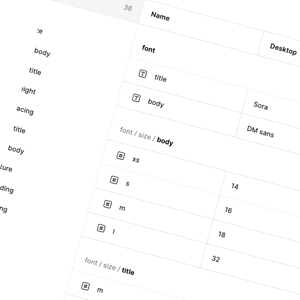Umbraco 14, set to be released on 30th May 2024, brings exciting changes to the popular CMS platform.
The highlight of this release is the introduction of the new back office. Built using web components, Typescript, Lit, and modern web API’s, the latest version of the CMS is more extendable than ever and has been thoroughly future proofed.
Content editors and digital product owners won’t notice any significant changes to the familiar CMS interface they love, but they will benefit from the improved technology under the hood, making Umbraco projects easier to maintain and extend.

Introducing Bellissima
Bellissima, the new back office for Umbraco, is built with the future in mind.
Moving away from AngularJS, a newly decoupled architecture reduces dependencies on any specific tech stack.
The back office itself has been built with Typescript, but developers won’t be limited to any specific front-end framework. Package developers will be able to work with any front-end framework that supports web components, giving more flexibility and reducing the barriers to working with Umbraco.
Extension-first approach
Everything that has been implemented in the new back office has been done with a view to making this version of Umbraco the most extendable yet. Belle, the previous back office, had limited extension points. This presented significant challenges in producing non-breaking updates, but a suite of new API’s delivers opportunities for easier and more flexible customisation.
Extension API
More endpoints into the back office, making it easier for developers to extend and customise
Management API
Part of Umbraco’s headless offering, the management API extends more responsibility to the front-end and provides separation of concerns for back-end vs front end development
Context API
Mimics the dependency system of AngularJS
Web Components
Web components represent a significant shift in how developers build digital experiences, allowing creation of self-contained content items that can be reused across multiple web apps, without the front-end appearance or functionality being compromised by existing code. Although not new as a concept, compatibility across all browsers is a relatively recent development.
As the approach reaches maturity, everyone can benefit from the interoperability of Web Components, including Umbraco UI (released as part of U13) which forms a significant part of the new back office and provides a more consistent experience for editors.
Ultimately, web components embrace the reusability of atomic UI design concepts and low-code development, and mark another step forward in future proofing Umbraco and mitigating technical debt in the digital products we build with it.
Both Umbraco and Shout leverage Lit to rapidly build lightweight components that can be used across multiple applications.
Other changes
As we welcome new developments, it's time to say goodbye to the old…
-
- Macros - use cases covered by cleaner solutions within Umbraco
- Legacy MediaPicker - newer solution has been in place since v8
- Grid layout & Nested content - now deprecated and replaced by the much more flexible BlockGrid and BlockList functionality
Do I need to upgrade?
If you’re on Umbraco 13, the most recent long term supported (LTS) version, you’re covered by Umbraco’s support phase until December 2025. That means there’s no immediate need to move to version 14, but it would be wise to make sure your developers are up to speed with the new approach and consider your upgrade strategy.
If you’re on an older version of Umbraco, we’d recommend upgrading to either Umbraco 13 (LTS) or Umbraco 14 (STS) soon- we’ve pulled together a guide to maintaining your Umbraco estate to help you decide on the right path for you.
With Umbraco 14, you can look forward to a more modern and flexible CMS experience, empowering you to create and manage your digital content with ease























